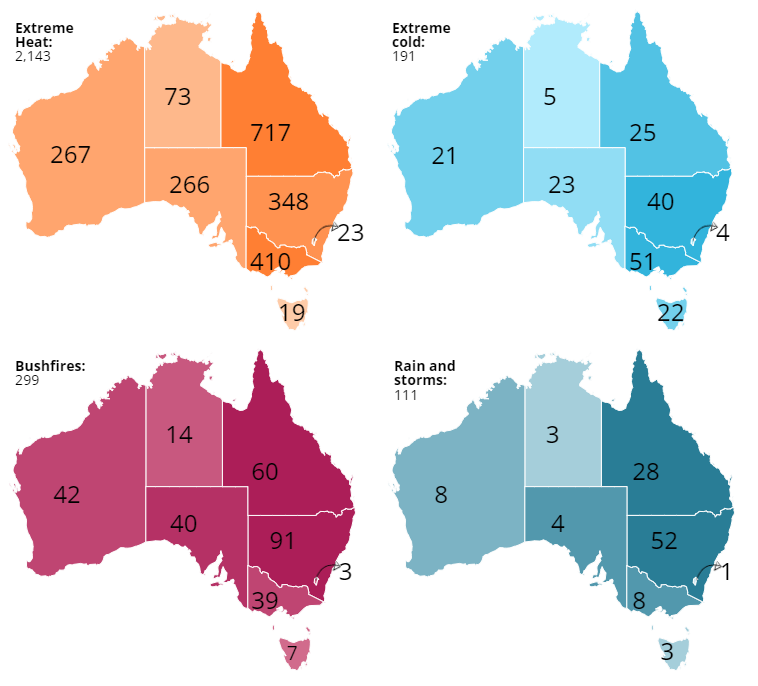States and territories
Specific extreme weather events vary geographically but in recent years Australia has seen large multi-state extreme weather events occur, such as the 2019-20 Black summer bushfires in Victoria, SA and NSW and the 2022 flooding across Queensland and NSW (BOM 2023). Multi-state, prolonged and sequential events can compound harm to human health and stretch available health and emergency management resources, further highlighting the need for cohesive national approaches to mitigate the effects of extreme weather conditions (MJA 2022).
Among people who had an extreme weather-related injury hospitalisation in 2019–20 to 2021–22, 1 in 3 usually lived in Queensland and almost 1 in 5 in Victoria (Figure 6). With the exception of Tasmania, exposure to excessive natural heat was the most common cause leading to injury hospitalisation for all states and territories.
Figure 7: Number of extreme weather-related injury hospitalisations, by state or territory of person’s residence and type of extreme weather event or hazard, Australia, 2019–20 to 2021–22

Source: National Hospital Morbidity database (NHMD)
For more information see Supplementary Data Table 4 (XLS 156KB)


